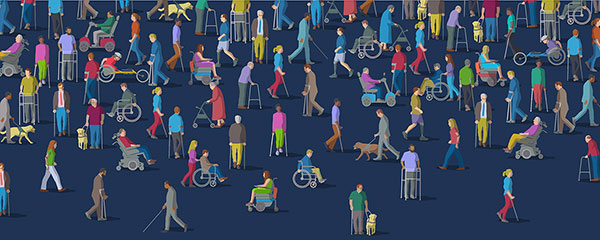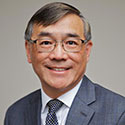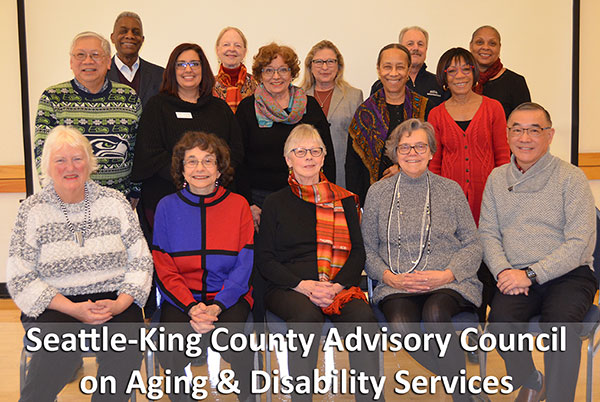31 Years: Are We Accessible Yet?

On July 26, the federal Americans with Disabilities Act (ADA)—a civil rights law—turns 31 years old. Despite COVID pandemic stay-at-home orders, last year’s 30-year celebration was outstanding, with three hours of curated programming related to disabilities and accessibility on the Seattle Channel, an hour-long program on King County TV, and nearly two hours of programming that was broadcast statewide by TVW. A year later, these links still provide excellent information about accessibility in our region.
This year’s 31st anniversary is an odd number and I’m not aware of local celebrations, but I want to take advantage of the anniversary to share a few thoughts.
Who needs accessibility?
As reported in the Area Plan for King County 2020–2023 (page 18), disability rates are high among older adults (38 percent) and even higher for older people living in poverty (55 percent). In general, Black, brown, and indigenous people in King County—regardless of age—are more likely than white people or people of Asian descent to have a disability. The number of older adults with disabilities in King County is projected to increase steadily as the older adult population grows.
Accessibility has never been more important. In truth, we all need and deserve equitable access to our physical and social environments and to opportunities to live comfortably.
Many kinds of disabilities
The International Symbol of Accessibility that appears on accessible parking signs, near reserved seating, and other places, doesn’t adequately portray all the people who benefit from the ADA.
“To be protected by the ADA, one must have a disability, which is defined by the ADA as a physical or mental impairment that substantially limits one or more major life activities, a person who has a history or record of such an impairment, or a person who is perceived by others as having such an impairment. The ADA does not specifically name all of the impairments that are covered.”—ADA.gov
There are many kinds of disabilities—some visible, many invisible. There are many people who live with a disability who do not consider themselves to be “disabled.” There are also people who label themselves as “disabled” or use a specific disability to describe themselves, because it’s an important part of their identity and advocacy. In general, I use people-first language that acknowledges a person before anything that describes them, which I find most respectful, regardless of appearance, race, ethnicity, disability, or gender expression.
The ADA does not cover private homes
The ADA applies to local and state governments as well as nonprofit organizations and for-profit businesses that offer a place of public accommodation, but not homes—at least not those that were built with private money (not government subsidy). If a business is in a private home (e.g., a professional office or a childcare center), the portion used for that purpose is subject to ADA requirements. This doesn’t apply to most private homes, and most are difficult to navigate for someone who has mobility limitations and other challenges. They are not out of compliance with the ADA—the ADA just doesn’t apply to them.
Several years ago, Tom Minty—a Realtor who has served multiple terms on the Seattle-King County Advisory Council for Aging & Disability Services and is a founding member of the Northwest Universal Design Council—teamed up with Realtor Barry Long, a longtime disability advocate, to make it easier for homebuyers to find accessibility features using the Northwest Multiple Listing Service. Read Tom’s article (“Everyone Deserves a Home That Meets Their Needs”) in the March 2019 issue of AgeWise to learn more. Tom and Barry continue to support this work by presenting trainings for real estate professionals. If you know a Realtor, have them contact Seattle King County Realtors for more information.
Building disability and accessibility awareness
Over the past decade, the Northwest Universal Design Council (NWUDC) has presented excellent public events to help build awareness of accessibility issues—most recently in 2020, prior to the COVID outbreak (see the Universal Design & Pedestrian Wayfinding Forum video recording on the Seattle Channel). Two other forums that stand out for me are How to Plan an Accessible Event (May 2019), which was presented by a large panel of people with a range of disabilities, and Are Your Digital Communications Accessible? (April 2016). These are among many others—visit the NWUDC event archives for links to more video recordings.
Age Friendly Seattle—an initiative to help make Seattle a great place to grow up and grow old—has focused its resources on accessibility issues over the past four years. Their Community Guide to Accessible Events and Meetings has been presented at national conferences. Its basic premise is that event and meeting planners (not just professionals but anyone who schedules) should plan to ensure that everyone who attends feels welcome and anyone who has a physical or sensory challenge can have a comparable experience to those who do not.
Age Friendly Live programs embrace hearing and language access (read Age Friendly Seattle Increases Access and Inclusion Despite COVID in our March issue) and they won an American Society on Aging Award for Excellence in Multicultural Aging earlier this year (learn more here).
I’m told that City of Seattle’s Citywide ADA Title II Compliance Program unveiled 10 custom ADA trainings last year to increase staff awareness and understanding of disability etiquette and strategies for effective communication with people who have hearing, vision, and speech disabilities. This helps to ensure their access to facilities, programs, and services every bit as much as removal of architectural barriers.
Last month, the University of Washington, Northwest ADA Center, and City of Seattle joined forces to present two days of digital accessibility training at no charge for anyone in Washington state who works for a city or county. I hope this will be offered again at periodic intervals.
Please read “Accessibility is a Social Right,” the next article in this issue of AgeWise, to learn writer Peter Slatin’s perspective on social accessibility.
No more excuses
Have you ever heard a person in charge of a venue or event say that they could not provide an accessibility feature (like a ramp or automatic door opener) or service (like captions or interpretation) because it was too expensive, or that they weren’t given sufficient lead time to arrange for preferred seating or assistive listening devices? Time and money are frequent excuses. Please, no more excuses! Thirty-one years under the Americans with Disabilities Act is plenty of time to figure out how to get it right.
Learn more about disability resources:
As always, if you or someone you know needs local Aging Network or disability services, contact Community Living Connections (844-348-5464) for professional, confidential information and referrals, free of charge.
 Contributor Dick Woo chairs the Seattle-King County Advisory Council on Aging & Disability Services. He welcomes input from readers via e-mail (advisorychair@agewisekingcounty.org) as well as applicants for open positions on the council. For more information, visit www.agingkingcounty.org/advisory-council.
Contributor Dick Woo chairs the Seattle-King County Advisory Council on Aging & Disability Services. He welcomes input from readers via e-mail (advisorychair@agewisekingcounty.org) as well as applicants for open positions on the council. For more information, visit www.agingkingcounty.org/advisory-council.
Mark Your Calendars
Following are some of the virtual events (online or phone meetings) that ADS Advisory Council members are interested in attending:
- Close to Home—Kinship Care: Thursday, July 1 (10:30–11:30 a.m.), online and phone options. Presenters include Alesia Cannady, founder and executive director of Women United Seattle, a nonprofit organization that provides kinship caregivers raising another family member’s children, particularly grandmothers. To log on at event time, visit bit.ly/AgeFriendlyLive.
- ADS Advisory Council Meeting: Friday, July 9 (12 noon). The main activity is a work session on the Area Plan Update for 2022–2023. To receive a link to join the meeting, e-mail Sariga.Santhosh@seattle.gov.
- Civic Coffee Hour—Public Health Seattle & King County: Thursday, July 15 (10:30–11:30 a.m.), online and phone options. Presenters include Shauna Clark, RN, with their Long-Term Care Facility COVID-19 Response Program, and James Lewis, MD, MPH, who focuses on communicable disease in their Epidemiology & Immunization Section. To log on at event time, visit bit.ly/AgeFriendlyLive.
- Mayor’s Council on African American Elders: Friday, July 16 (2:00–3:30 p.m.) online only. To receive a link to join the meeting, e-mail Karen.Winston@seattle.gov in advance.
- Seattle Mayor Candidates Forum: Thursday, July 29 (3:00–4:30 p.m.) on Zoom—no registration required; submit questions in advance via SurveyMonkey. Coordinated by the Mayor’s Council on African American Elders and PSARA.
- Area Plan Update Public Hearing: Monday, August 2 (10:30 a.m.) online—register in advance to receive the meeting code. Hosted by the Seattle-King County Advisory Council on Aging & Disability Services Planning & Allocations Committee.
For more local Aging Network events, click here.
![AgeWise King County [logo]](https://www.agewisekingcounty.org/wp-content/themes/agewisekingcounty/images/logo.png)
